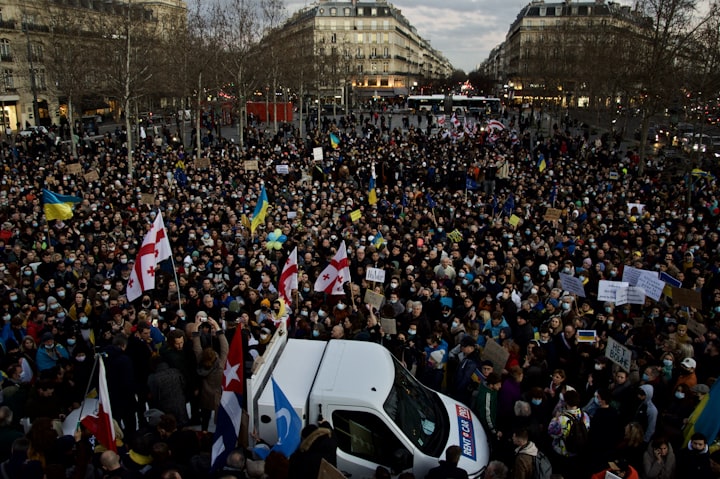Background and Causes: Explore the origins of the conflict, including the historical, political, and social factors that contributed to the tensions between Ukraine and Russia
CONFLICT IN UNKRAINE

The origins of the conflict between Ukraine and Russia are multifaceted and can be traced back to a combination of historical, political, and social factors. Here are some key aspects that contributed to the tensions:
Historical Context:
a. Soviet Legacy: Both Ukraine and Russia were part of the Soviet Union until its dissolution in 1991. The legacy of Soviet rule and the uneven distribution of power and resources within the Soviet Union continue to influence the relationship between the two countries.
b. Crimea: Crimea, a region historically and culturally tied to both Ukraine and Russia, has been a longstanding point of contention. In 1954, Crimea was transferred from the Russian Soviet Federative Socialist Republic to the Ukrainian Soviet Socialist Republic, a decision that became more contentious in later years.
Ethnic and Linguistic Divisions:
a. Ukrainian Identity: The question of Ukrainian national identity and the Ukrainian-speaking population's desire for closer integration with Europe have been key factors in the conflict. Some Ukrainians identify closely with Europe and seek to distance themselves from Russia.
b. Russian-Speaking Population: Ukraine has a significant Russian-speaking minority, particularly in the eastern and southern regions. Their concerns about cultural and linguistic rights, as well as their historical and economic ties to Russia, have also played a role in the conflict.
Geopolitical Considerations:
a. Russia's Perception of Threats: Russia views Ukraine's potential alignment with the European Union (EU) and NATO as a threat to its strategic interests. Russia has historically considered Ukraine as part of its sphere of influence and has sought to maintain control over the country.
b. EU and NATO Expansion: Ukraine's aspirations to deepen ties with the EU and the possibility of NATO membership have raised concerns in Russia. The competition for influence between Russia and Western powers has intensified the tensions.
Political Instability and Corruption:
a. Yanukovych Era: The presidency of Viktor Yanukovych, who was elected in 2010, was marked by allegations of corruption, authoritarian tendencies, and close ties to Russia. Widespread protests, known as the Euromaidan movement, erupted in 2013-2014, leading to Yanukovych's ousting.
b. Power Struggle: The power vacuum that emerged after Yanukovych's departure contributed to a period of political instability, with different factions vying for control. This further fueled divisions within Ukraine and created opportunities for external interference.
It's essential to note that different perspectives exist on the causes and events leading up to the conflict. The complex nature of the conflict involves a combination of historical, cultural, political, and geopolitical factors that have shaped the tensions between Ukraine and Russia. Ethno-Linguistic Divisions:
a. Russian-Speaking Population: Ukraine has a significant Russian-speaking population, particularly in the eastern and southern regions. The concerns and aspirations of this population, including cultural and linguistic rights, have been a factor in the conflict.
b. Ukrainian National Identity: The development and assertion of a distinct Ukrainian national identity, separate from Russian identity, have played a role. This includes promoting the Ukrainian language, emphasizing Ukrainian history and culture, and seeking closer integration with Europe.
Crimea and Eastern Ukraine:
a. Annexation of Crimea: The annexation of Crimea by Russia in 2014 further intensified tensions. The predominantly Russian-speaking population in Crimea, historical ties, and strategic significance contributed to the contested nature of the region.
b. Conflict in Eastern Ukraine: The conflict in the Donetsk and Luhansk regions, commonly referred to as the Donbas region, involves separatist movements supported by Russia. The grievances of the local population, ethnic divisions, and aspirations for self-determination are key factors.
It is essential to note that interpretations and perspectives on the causes and events leading to the conflict may vary. The complex nature of the Ukraine-Russia conflict involves a combination of historical, political, social, and cultural factors that have shaped the tensions and continue to impact the region.






Comments
There are no comments for this story
Be the first to respond and start the conversation.